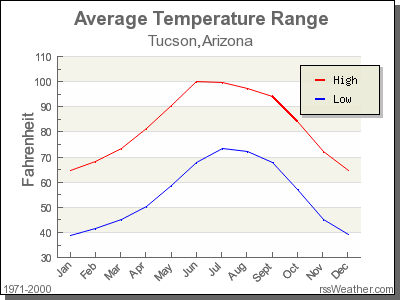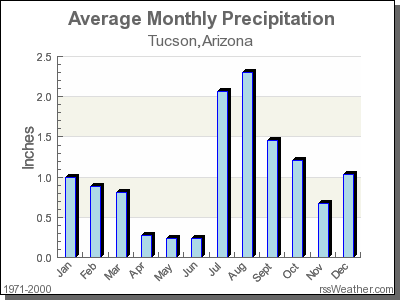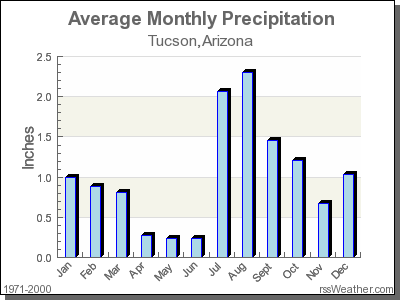So you’re planning a trip to Tucson, Arizona and wondering what the weather will be like? Well, you’re in luck!
This article will give you a brief overview of the weather in Tucson, so you can better prepare for your upcoming adventure. From scorching hot summers to mild winters, Tucson experiences a desert climate that is sure to offer you a unique and unforgettable experience.
So grab a cowboy hat and let’s dive into the fascinating world of Tucson’s weather!

Weather Patterns
Tucson, Arizona experiences distinct weather patterns throughout the year. The city is located in the Sonoran Desert, so it is characterized by hot and dry summers, mild winters, and a monsoon season. Understanding these weather patterns is essential for residents and visitors to plan their activities and stay safe.
Seasonal Variations
Tucson has two main seasons: summer and winter. Summers are hot and dry, while winters are mild and relatively cooler. During the summer months, temperatures can reach extreme highs, sometimes exceeding 100 degrees Fahrenheit. In contrast, winter temperatures are more comfortable, ranging from the mid-50s to the mid-60s.
Temperature Extremes
Tucson experiences temperature extremes throughout the year. The hottest months are June, July, and August, with average temperatures consistently exceeding 100 degrees Fahrenheit. In contrast, the coldest months are December and January, with average temperatures ranging from the mid-50s to the low 60s. It is important to be prepared for these temperature extremes and dress accordingly.
Monsoon Season
Tucson has a unique weather phenomenon known as the monsoon season. This typically occurs from mid-June to the end of September. During the monsoon season, the city experiences intense thunderstorms, heavy rainfall, and occasional flash floods. While these storms bring relief from the scorching heat, they can also pose risks. It is important to stay informed about weather forecasts and be prepared for sudden changes in weather during this season.
Temperature and Sunshine
Understanding temperature and sunshine patterns in Tucson is crucial for planning outdoor activities and staying comfortable.
Average Temperatures
Tucson enjoys relatively warm temperatures throughout the year. The average temperature varies depending on the season. In summer, the average high temperature reaches around 100 degrees Fahrenheit, while in winter, the average high temperature hovers around the mid-60s. The average low temperatures in summer are in the mid-70s, whereas in winter, they drop to the mid-40s.
Hottest and Coldest Months
The hottest months in Tucson are June, July, and August. During these months, temperatures can soar above 100 degrees Fahrenheit, making it essential to stay hydrated and take necessary precautions to avoid heat-related illnesses. On the other hand, the coldest months in Tucson are December and January, with temperatures ranging from the mid-50s to the low 60s. It is important to pack appropriately and dress in layers during the cooler months.
Sunshine Hours
Tucson is known for its abundance of sunshine. On average, the city receives over 350 days of sunshine per year. This makes it an ideal destination for outdoor activities, such as hiking, biking, and exploring the natural beauty of the desert. However, it is important to protect yourself from the sun’s harmful rays by wearing sunscreen, a hat, and sunglasses, especially during the peak summer months.
Precipitation and Humidity
Tucson experiences a relatively low amount of precipitation throughout the year. Understanding the rainfall patterns and humidity levels can help you prepare for any potential changes in weather.
Rainfall Patterns
Tucson is considered a dry climate, with an average annual rainfall of around 11 inches. The majority of the rainfall occurs during the monsoon season, typically from July to September. During this period, intense thunderstorms can bring heavy downpours and increase the risk of flash floods. Outside of the monsoon season, rainfall is scarce, with little precipitation occurring during the rest of the year.
Driest and Wettest Months
The driest months in Tucson are April and May, with minimal rainfall and dry conditions. These months see an average of just a few millimeters of rainfall. In contrast, the wettest months are July and August, which coincide with the monsoon season. During these months, Tucson experiences the highest amount of rainfall, with the potential for localized flooding in some areas.
Humidity Levels
Tucson has relatively low humidity levels, especially during the summer months. This is due to the arid desert climate. On average, humidity levels in Tucson range from around 20% to 30%. However, during the monsoon season, humidity levels can temporarily increase, making the air feel more humid. It is important to stay hydrated and take necessary precautions during this period to avoid dehydration.
Wind and Dust
Tucson experiences occasional windy conditions and dust storms, which are characteristic of desert regions.
Wind Speeds
Winds in Tucson can vary in intensity, but on average, they are relatively mild. The city experiences average wind speeds ranging from 5 to 10 miles per hour. However, occasional gusts of wind can occur, especially during storms and monsoon season. It is important to secure any loose objects and take caution while driving during windy conditions.
Dust Storms
Dust storms, also known as haboobs, can occur in Tucson due to its location in the desert. These intense dust storms are characterized by strong winds carrying a substantial amount of dust and sand, resulting in reduced visibility. When a dust storm occurs, it is important to stay indoors and keep windows and doors closed to minimize the ingress of dust. Driving during a dust storm is highly discouraged due to hazardous conditions.

Climate Change Impact
Tucson, like many other regions around the world, is facing the impacts of climate change. Here are some notable climate change effects observed in the city:
Increasing Temperatures
Climate change has led to a gradual increase in temperatures in Tucson. The city has experienced rising average temperatures over the past few decades. This trend is expected to continue, potentially leading to more extreme heatwaves and longer periods of hot weather. It is essential to adapt to these changing conditions by staying hydrated, seeking shade, and minimizing outdoor activities during the hottest parts of the day.
Extreme Weather Events
Climate change has also contributed to an increase in extreme weather events in Tucson. While the city has always experienced monsoon thunderstorms, these events have become more intense and unpredictable in recent years. This has led to flash floods, damaging winds, and lightning strikes. Staying informed about weather forecasts and having an emergency plan in place during severe weather events is crucial for personal safety.
Weather Advice
To make the most of your time in Tucson and stay safe, here are some helpful weather advice tips:
Sun Safety
With the abundance of sunshine in Tucson, it is important to practice sun safety. Make sure to wear sunscreen with a high SPF, protective clothing, a wide-brimmed hat, and sunglasses when spending time outdoors. It is also crucial to stay hydrated by drinking plenty of water and seeking shade whenever possible, especially during the hottest parts of the day. Remember, prolonged sun exposure without protection can lead to sunburns, heat exhaustion, and long-term skin damage.
Monsoon Safety
During the monsoon season, it is important to stay informed and prepared for sudden changes in weather. Keep track of weather forecasts, especially during periods of active thunderstorms. It is advisable to avoid hiking or camping in washes, as flash floods can occur rapidly. If you encounter a dust storm or haboob, seek shelter indoors and wait until visibility improves before resuming any outdoor activities. Being aware of the risks associated with monsoon weather and taking necessary precautions can help ensure your safety.

Conclusion
In conclusion, Tucson, Arizona, experiences distinct weather patterns throughout the year. With hot and dry summers, mild winters, and a monsoon season, it is important to be prepared and informed about the weather conditions. Understanding temperature extremes, precipitation patterns, and potential hazards like dust storms can help you plan your activities and stay safe. By following sun safety advice and being aware of monsoon season precautions, you can make the most of your time in Tucson while enjoying its unique climate and natural beauty. Stay informed, adapt to changing conditions, and make the necessary adjustments to fully enjoy all that Tucson’s weather has to offer.










